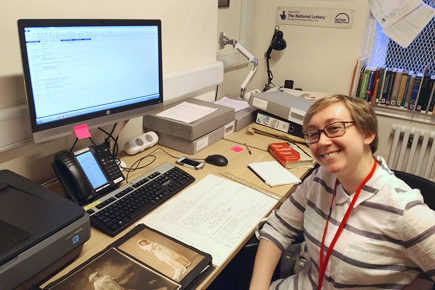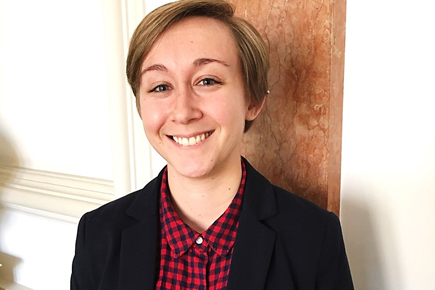Museum Blog: The work of a volunteer
Monday 20 November 2017
I joined the Royal College of Music Museum as a volunteer in May 2017. At the time I was studying for my MA in European Jewish History at Queen Mary University of London, which I've just completed. During my time as a student, I looked for ways to apply what I’ve learned in my degree and put my interest in museums to practical use. When I heard about how the RCM Museum was awarded Heritage Lottery Funding to re-develop its gallery and digitise its collections, I decided to get in touch to see how I could be involved. It seemed like a really exciting time to be a part of the museum team and see what new and interesting things the team was going to discover and create.
Looking back on my time as a volunteer, I can say that I’ve definitely developed valuable skills as a result of this process. I’ve really grown in the area of image reprographics (image editing) so I’ve learned how to use software like Photoshop and Lightroom to prepare scanned images for archiving. I have put these image editing skills to use in order to catalogue the Museum’s vast iconography collections.
To make an item from the collection available online, we go through a particular process. For example, if you want to digitise a letter or a newspaper clipping, you have to read through everything and try to get a sense of the essential information to generate a description of the content, noting any important persons or events mentioned. In this way, you are doing some research before entering anything into a database! You’d then populate fields within the collections management system (CMS) which links these identifiers into an online dictionary used by many museums. You then need to scan in the photograph or clipping and then edit it: cropping and adjusting the image so the colour is right. Sometimes because of the nature of the artefacts you’re working with – whether it’s messy handwriting on a letter or an old photograph that was damaged by fire – you might find the image needs to be enhanced so that researchers can better understand what they’re looking at.

| Leah cataloguing the photographs in the Mary Garden album |
I find this kind of work really satisfying because when it’s all finished you can see an improvement in the quality of the images you have scanned and also see how individual items fit within the collection as a whole. After inputting a couple of items, I certainly feel as though I am making a difference in the way the collection will be used by researchers!
One part of the collection which I particularly enjoyed working with was the holdings related to Samuel Coleridge Taylor, a Black English composer. He encountered and overcame so many prejudices throughout his life. It was really interesting to see how race played a role, not only in his works but also in the way he was received by the predominantly white musical community at the turn of the 20th century. He is now regarded as a musical genius, and is one of the RCM’s most revered Alumni. We recently used some of the material I digitised to make an online exhibition about his life and works (http://www.rcm.ac.uk/museum/exhibitions/).
Now that I’ve finished my dissertation, I’m just trying to enjoy my free time. My girlfriend and I like to go to parks and experience everything London has to offer. I grew up on a farm in Missouri, so you could say I’m a stereotypical country girl in awe of this big city! I’m always looking for ways to learn more about life here and am hoping to stay in London to continue my work with museums.
Leah Barngrover
Volunteer, Royal College of Music Museum
|
The Royal College of Music Museum is under redevelopment until 2019 as part of a Heritage Lottery Funded project to create a brand new gallery and transform the digital presence. The museum recruited seven volunteers over the summer to help make over 500 items from the collection freely available online through its digital platform and a series of digital exhibitions developed in collaboration with Google Arts and Culture. It is thanks to the dedicated team of digitisation volunteers that items which were previously only available to those within the museum walls are now on the internet for anyone to see. To stay up to date on the latest volunteering vacancies, please visit our volunteer page. |








